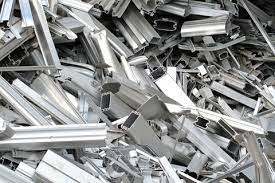 Metal recycling involves sorting scrap metal alloys into different categories. These include ferrous metals, which are magnetic, and non-ferrous metals, which are non-magnetic. The non-ferrous material is then separated from the ferrous scrap by using an electromagnet. Some materials can be sorted manually and some need to be shredded into smaller pieces before they can be recycled. By clicking here we get info about metal recycling Kansas City
Metal recycling involves sorting scrap metal alloys into different categories. These include ferrous metals, which are magnetic, and non-ferrous metals, which are non-magnetic. The non-ferrous material is then separated from the ferrous scrap by using an electromagnet. Some materials can be sorted manually and some need to be shredded into smaller pieces before they can be recycled. By clicking here we get info about metal recycling Kansas City
There are many benefits to steel recycling, including environmental and economic benefits. Steel is the most common metal recycled, but there are several types, including stainless steel. Each has specific uses, and each type can be recycled. Copper, aluminum, and nickel are common examples of non-ferrous metals. They are also recyclable and contain a wide range of other metals, including gold and silver.
The first step in metal recycling is the separation of scrap materials. Scraps are broken down by machines into pieces that are similar to each other in composition. This reduces the energy needed to recycle scrap metal. Afterwards, the metals are refined into new products. Most recycling services use electrolysis to remove any contaminants.
Another benefit of metal recycling is that it can lower prices. Because precious metals can be expensive, their recycling helps reduce prices. Metal recycling helps to preserve natural resources and reduce the need for new sources. By reducing the production costs of scrap metal, it is possible to create jobs in the recycling industry. While the process of recycling can be costly, it is worth the effort.
Metal recycling can help conserve resources and reduce greenhouse gas emissions. Compared to new metal production, recycled metal has less energy requirement than virgin ore. Recycling metals also reduces air pollution in cities, which can affect the health of citizens. It also reduces the amount of water needed for mining. Aside from helping the environment, metal recycling can improve a country’s economy.
The process of metal recycling begins with the segregation of scrap metal. The materials are placed into specialized containers. These containers are designed to keep the metals in good condition. Different metals require different kinds of containers. Once the metals are sorted, they are transported to factories to be used in manufacturing processes.
Steel recycling follows a similar process. Steel cans are melted down and poured into casters that continuously roll them into sheets. The steel is then used to make new cars and buildings. Some steel products contain up to 100 percent recycled steel. This process saves energy. This helps to make the environment more sustainable.
Recycling metal is crucial for a circular economy, as it uses significantly less energy and has a lower environmental impact than producing metal from ore. The process can also create jobs. It is a convenient way to dispose of unwanted materials. Some hazardous waste disposal companies will haul your scrap metal to a recycling facility for you.